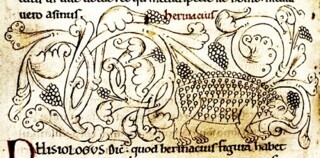Hash-hogs
Mary Wellesley
The hashtag was invented by Chris Messina, a programmer and open source advocate, in August 2007 as a way of flagging up the salient features of a tweet. He took the hash sign, which had meant ‘number’, and made it mean ‘important concept-alert’. The hashtag’s use in tweets has now developed a style and language of its own. They’re everywhere, punctuating Twitter and Instagram jokes, Facebook posts and other forms of communication. I like making stupid hashtag neologisms, but I’m probably not alone in feeling uneasy about the way they boil large bodies of information down to a couple of words. There is, of course, something brutally reductive about them, and the word ‘tag’ has overtones of criminality or pricing: available for search, available for purchase.
Yet the hashtag isn’t really a new concept. It serves a simple and obvious purpose: it’s a finding tool. The moment you – as a reader – have a large body of information, you need a method for navigating through it to find the bits you want. The scribes and readers of Isidore of Seville’s Etymologies faced a similar problem. Isidore (c.560-636) was a Spanish bishop who set about trying to cram all the world’s knowledge into a kind of encyclopedia. The result is filled with useful information: that panthers, for instance, are friendly with all animals, except dragons, and are generous creatures that ‘rejoice in the society of their own kind’ and give ‘back whatever they receive in the same kind’. Good to know if you find yourself bartering with a panther. The hedgehog, Isidore says, feeds its young by visiting vines, plucking the grapes from the plant and rolling over them in order to impale them on its spines. Then it returns to its young replete with kebabbed grapes. Some manuscript images depict the hedgehog striding home like an ambulant 1970s canapé tray.
Beyond these nuggets of dubious zoological information, Isidore set about outlining grammar, rhetoric, medicine, law, church history, human history, human language, agriculture: in short, everything. He structured his work around etymologies and thought that meaning could be deduced from understanding a word’s history. Single words as units could be instantly unpacked and a whole world of signification would be revealed. In a sense, he felt that there was a kind of intellectual click-through to each word.
There’s so much information in this work that it required a complex indexing system, an extra-textual apparatus to help readers find particular sections: a multi-compartment table of contents, with headings and numbers that correspond to sections of the text. These headings or rubrics (rubric literally means something that is written in red ink, as they often were in the manuscripts) are just a species of hashtag, which is why John Paul II nominated Isidore to be the patron saint of the internet. It’s hard to think of a better candidate: the curator of a large body of material which requires a complex searching mechanism to help you find information about medicine or law or, more likely, cool stuff about hedgehogs.
